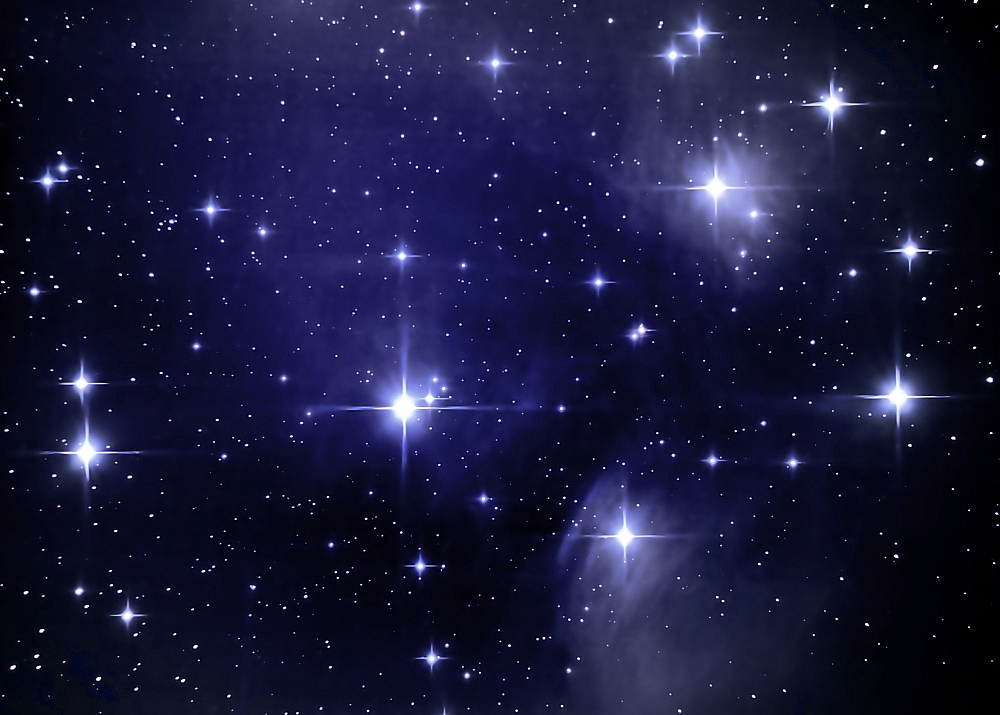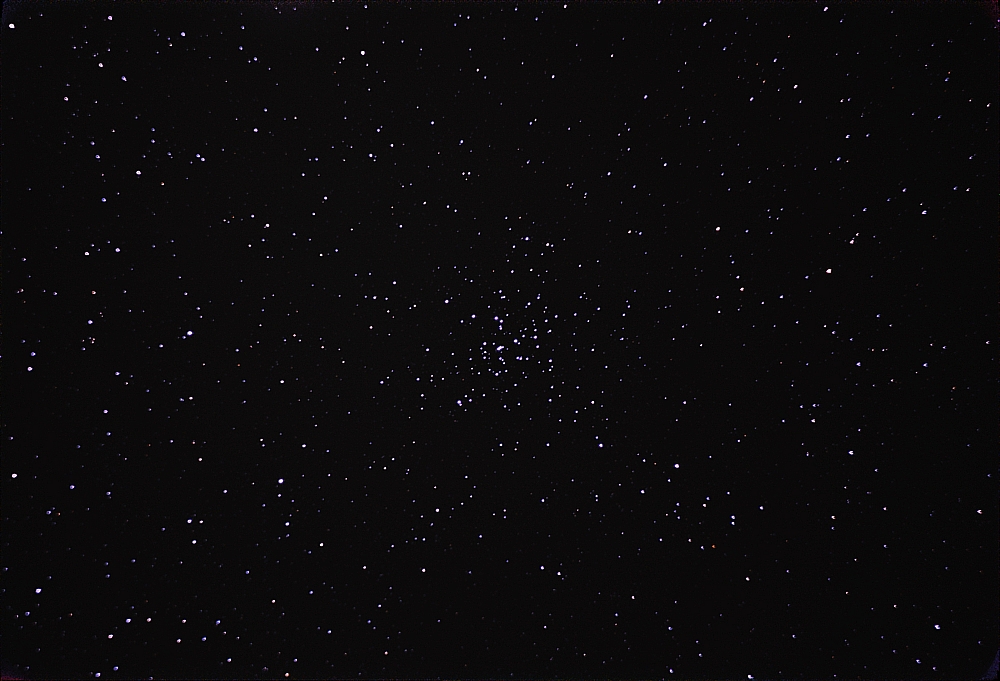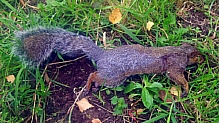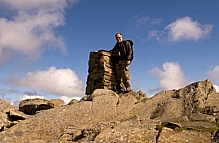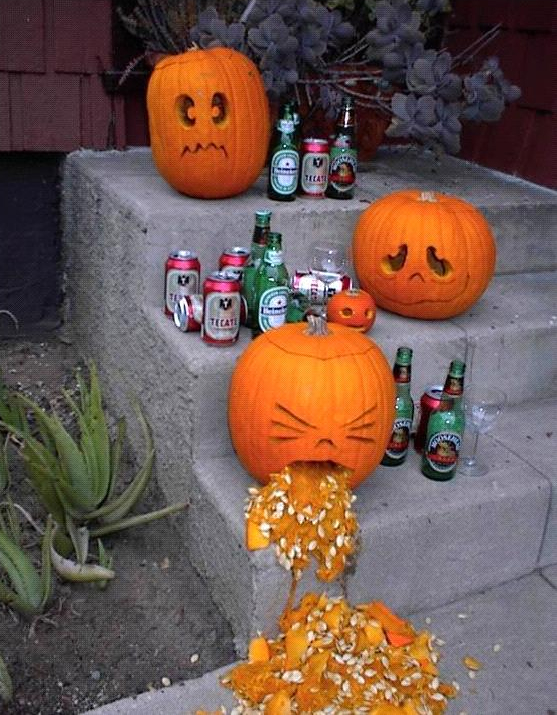
Archive for October 2008
Plans on ice
Observing Report 27th-28th October 2008 (Scooby-Doo, Where Are You?)
The recent change in the weather's been bad for some, but good for others. Last night it provided an opportunity that I wasn't going to miss - the two previous evenings had started dark and clear, but were affected by fast-moving patches of cloud by the time I was free to observe. This time I figured that it would be better - the forecast sub-zero temperatures would only be achieved without the insulating layer of cloud, and so it proved to be - nice and clear except for an intermittent haloing of the brightest stars due to high-altitude conditions, probably ice-crystal formation.
I managed to give the scope only one hour or so to cool down before pressing it into service, but I wasn't going to be doing any high-mag work so it didn't matter that much. I took more time than usual getting a good polar-alignment, so by the time I'd got properly set up, it was quite late.
As usual, there's always something new to try, this time I was trying out the camera-control features of MaxIm DL, another nice bit of software that I want to get to grips with. This software will happily run a USB connection between the laptop and my Nikon D50, allowing me to set up a complete series of exposures (darks, lights etc) and then let the lappy do the rest, including downloading and saving direct from the camera instead of writing to the SD card. The only restriction that affected me was the 30-second maximum exposure time allowed by the kit that I have - the Nikon D50 needs IR shutter-control for exposures longer than that, USB will only work up to that limit. Never mind, what I've got will suffice until I acquire said USB-IR controller.
Anyway, back to the sky...
The prime target was M45, The Pleiades, the Seven Sisters, call it what you will. It's a distinctive pattern in Taurus, and one that I've observed visually many times. After locating it visually with the scope, I checked that the mount was tracking it OK then exchanged the eyepiece for the dSLR body. After taking a few shots to verify the focus was good, I set the software to take 100 x 30s dark frames then 100 x 30s light frames (all ISO 200 NEFs), set it running and retired to the kitchen to warm up with a strong cuppa (the temperature outside was down to +1C by then).
After donning my Alpkit down jacket, I went back outside with the binoculars to have a look around while waiting for the lappy and camera to finish their business. The Hyades (Melotte 25, or Collinder 50, or Caldwell 41) were an impressive sight in Taurus, and I spent more than a few minutes looking at the Orion Nebula (M42, NGC 1976). I spotted a few other "fuzzies" which I noted for future observing sessions.
By the time the M45 frames were finished, the temperature had dropped below freezing, and the outside of the scope tube was iced up. Fearing that this meant the end of the session, I checked the mirrors and the camera, and was pleasantly surprised to see that they were unaffected. Looking at the watch I realised that I didn't have enough time for another objective that would require a 200-frame batch, but I wasn't about to pack up in such good conditions, so I picked a secondary target that wouldn't need as many exposures.
M36 (NGC 1960), a neat open cluster in Auriga, seemed to fit the bill, so I programmed-in a 50 dark / 50 light sequence and let the software do the rest while I sat watching through the binos.
As usual, the packing away afterwards was a moist affair, with the iced-up kit forming puddles on the kitchen floor and the other seemingly-clear gear (such as the lappy) acquiring an alarming layer of condensation as soon as it was taken into the warm.
Anyway, here are the fruits of my labours, after giving the raw frames a right good seeing-to with DSS, Photoshop, Noel's Actions and a few cups of Assam-flavoured caffeine, and with the help of my two trusty manservants, Benson and Hedges:
M45 - The Pleiades
(Nikon D50 at prime-focus on C8-N, ISO 200, no filters, 100 x 30s light frames + 100 x 30s dark frame stacked with DSS, processed in PS CS3 with Noel's Actions)
M36 - an open cluster in Auriga
(Nikon D50 at prime-focus on C8-N, ISO 200, no filters, 50 x 30s light frames + 50 x 30s dark frame stacked with DSS, processed in PS CS3 with Noel's Actions)
I might re-stack them in MaxIm DL later, to see if they come out any better. If they do, I'll post the results.
Why "Scooby" in the title? You work it out.
Special Forces #2
Every year we have a bonfire party which is well-attended by family and friends. We provide lashings of food and drink (no alcohol), there's shelter with seating and background music, all we ask in return is that folk bring a few fireworks, behave safely and sensibly, and have themselves a good time. It's our only chance to entertain such large groups of people - it's a "big garden, small house" thing.
Of course, the focal point is the bonfire itself. In years past we've had substantial piles of wood to burn, mainly due to the bits that either fall from or are pruned from our large Salix babylonica. Neighbours also contribute their unwanted bits of wood, so there's usually a sufficient supply of fuel to keep the fire blazing for a few hours.
This year, it's a bit different. The party format's the same, but the bonfire could be a biggy. The reason for this is simple - we've had the tree reduced considerably (cheers, Mick, I owe you one), quite a few main branches have been lopped and all of the dead wood has been removed. Consequently, the pyre is now 12ft in diameter and 15 ft high, with another two huge piles of wood and sticks waiting in the wings for their chance to be returned to the atmosphere from whence they came. This is what the scene looks like at the moment:

Now safety is paramount - the danger area is fenced off, there are always at least three adults on duty looking after the kids, another one dispensing fireworks from a safe steel box, and two others letting them off at a safe distance. We take all reasonable precautions to minimise the risks of damage to property and injury to people, and we're as prepared as possible should any accidents happen, but we were concerned about the size and siting of the bonfire so I decided to ask for the opinion of the experts. I called the County Fire and Rescue Service. The conversation was interesting, it went something like this:
Hello, this is the Fire and Rescue Service. Can I help you?
Hello. I'd like to talk to somebody about bonfires at domestic fireworks parties, please.
I can probably help you with that, what do you want to know?
Oh, just the basic things, such as: are there any size restrictions, and are there any recommended minimum distances from outbuildings, sheds, fences, trees, hedges, boundaries and the like. We're a bit concerned that the fire that we're building might be too big.
Ah. I'll just put you through to a colleague who may be able to help.
Through I went...
Hello, I understand that you want advice about bonfires.
Yes, please. Size, positioning etc.
We don't have any guidelines for domestic bonfires. We do publish documents about firework safety, but they don't cover bonfires.
OK. I'd probably have to get somebody to come have a look then. Please could you let me have the phone number for our local Fire Safety or Fire Prevention Officer? We're only five minutes from the local fire station, hopefully the Officer can nip over here at a time to suit himself and have a quick look, it won't take more than a quarter of an hour. I'll even put the kettle on for him.
No, he won't. They don't provide a service for domestic premises.
Say again?
They won't come to your home.
But this is fire prevention and safety. Part of the job remit, I would have thought.
(awkward silence at the other end)
But they will come around when the shed's on fire, or when the neighbour's house is alight, won't they?
Oh yes.
But then it'll be too late. I'm trying to prevent that.
(awkward pause at the other end)
Sorry. Is there anything else that I can help with?
Anything else? You can't exactly help with this matter, let alone anything else. Goodbye.
Seasoning
It's taken me a week to figure out what's not quite right with the pics from last weekend at Buttermere... they're too green. It's not a problem with the camera, or an excess of photoshopping, it's to do with the trees - they're nearly all in full green leaf, hardly any have turned that autumnal brown that lends contrast to the scenery.
Looking around the garden, there are signs of a seasonal mismatch there too...
After having dropped all of its flowers and buds three weeks ago, our hardy Fuchsia has come into bloom again, and is busy throwing out a new growth of lighter-coloured leaves.
The wild Foxgloves in the front garden died back over a month ago after providing an excellent riot of colour for the previous few months, but at least one has decided to have another go, and is adding a late splash of brightness to the borders.
The seemingly-immortal Clematis that occasionally climbs the north-facing wall of the house is really going for it - it flowered in April, then died back and dried out so much that I cut it back hard to the root. After that it started growing again and put on an unprecedented display during July, August and September, after which it wilted, losing all of its flowers and most of its leaves. It was pleasing to note that yesterday it was flowering yet again, and it's loaded with new buds that really shouldn't be there at this time of year.
Maybe it's not a mismatch, it could be that they just like playing extra-time.
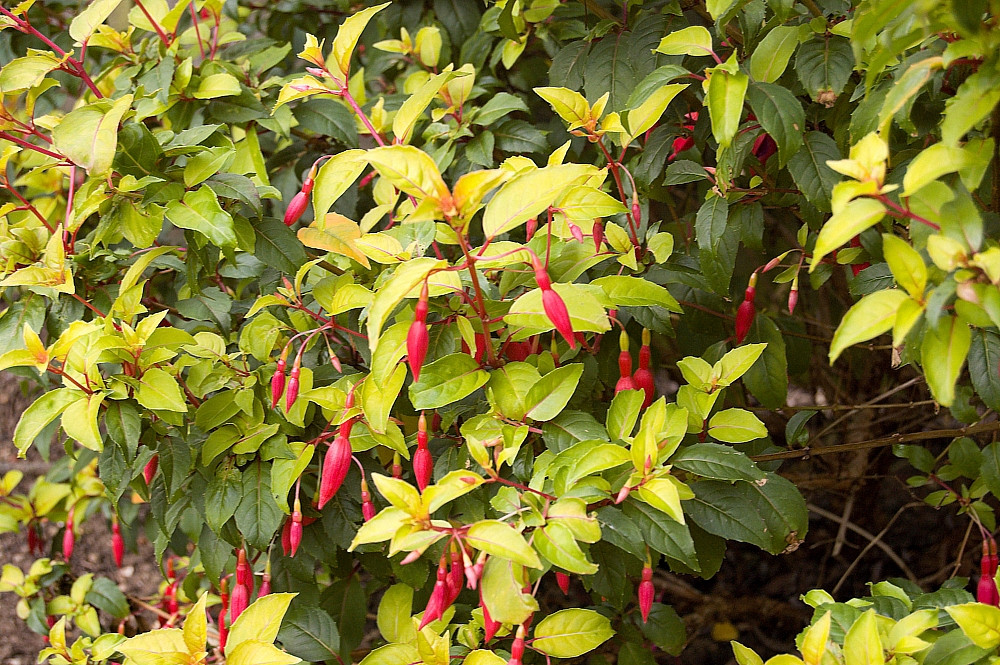
Confuchsia
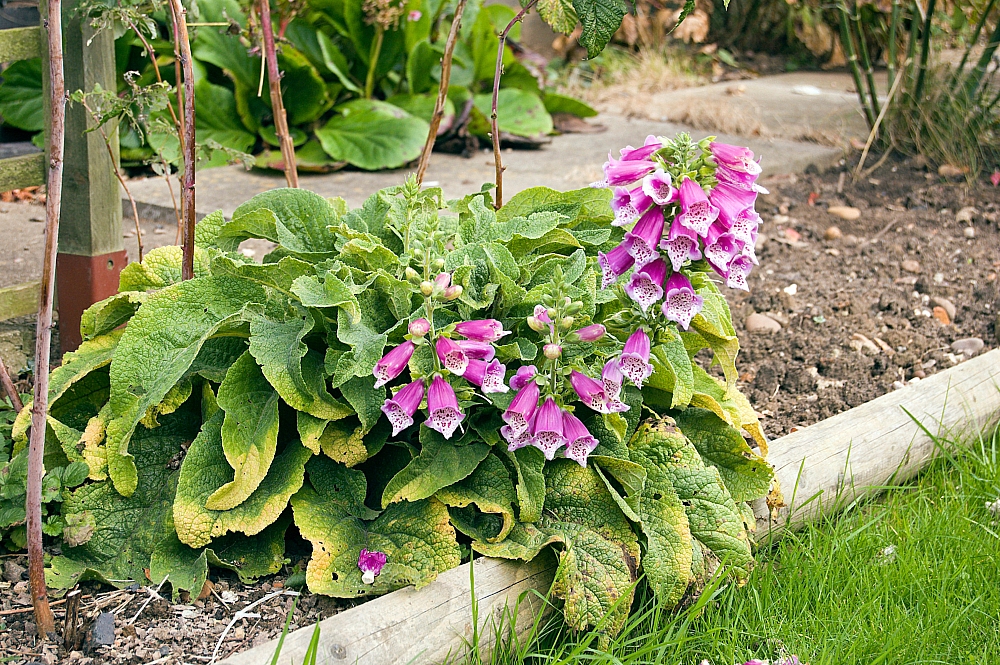
Foxedglove
Our Weekend at Buttermere – Part 2
Sunday morning was dry and even brighter than Saturday. I was up and about well before breakfast, outside with the camera taking some pics in the low rays of the early sunlight:

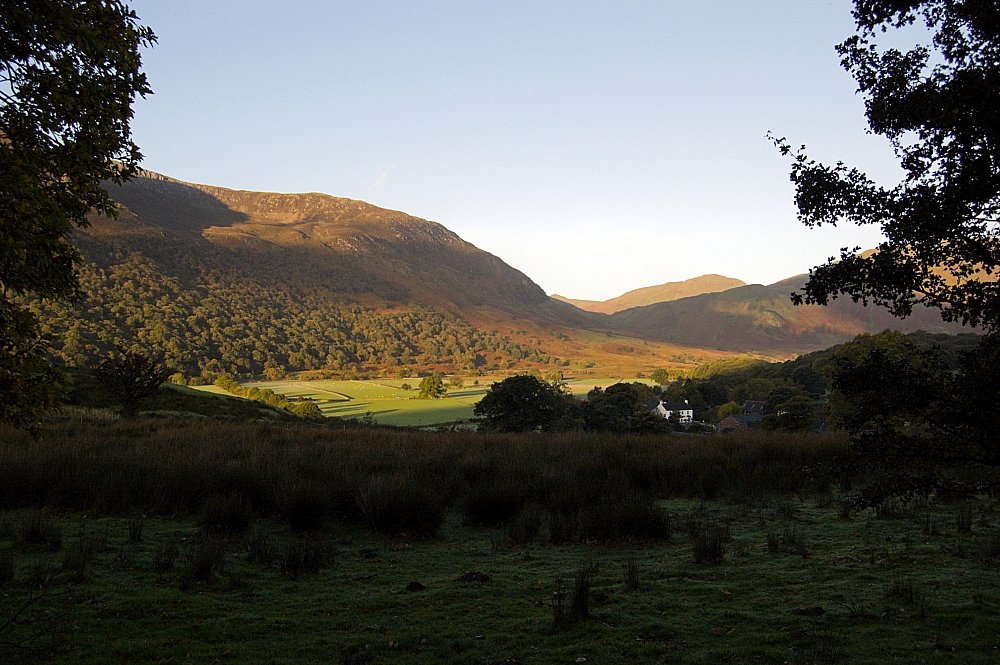

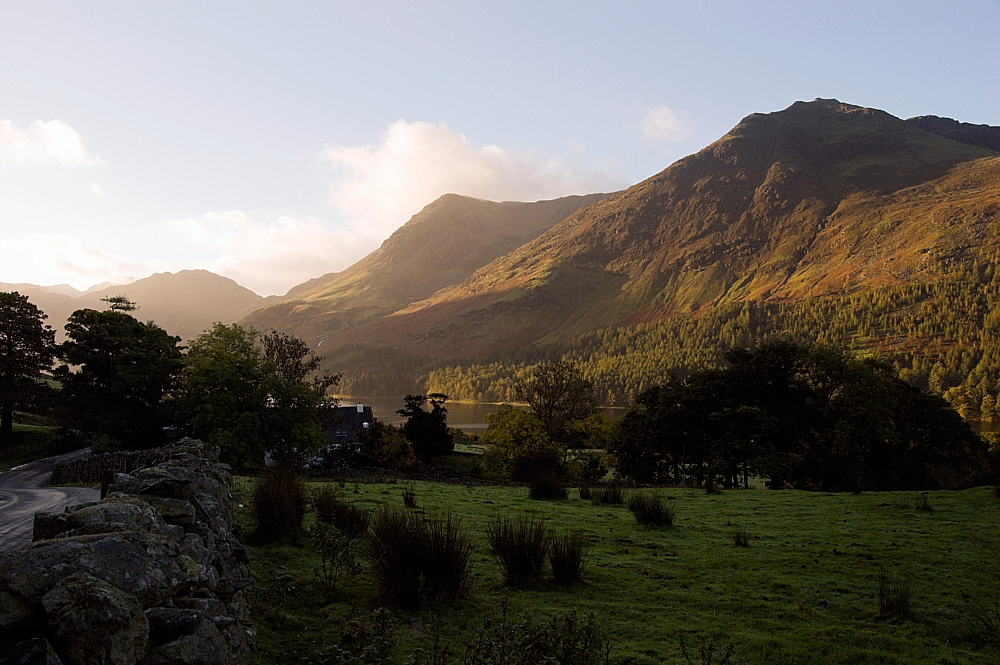
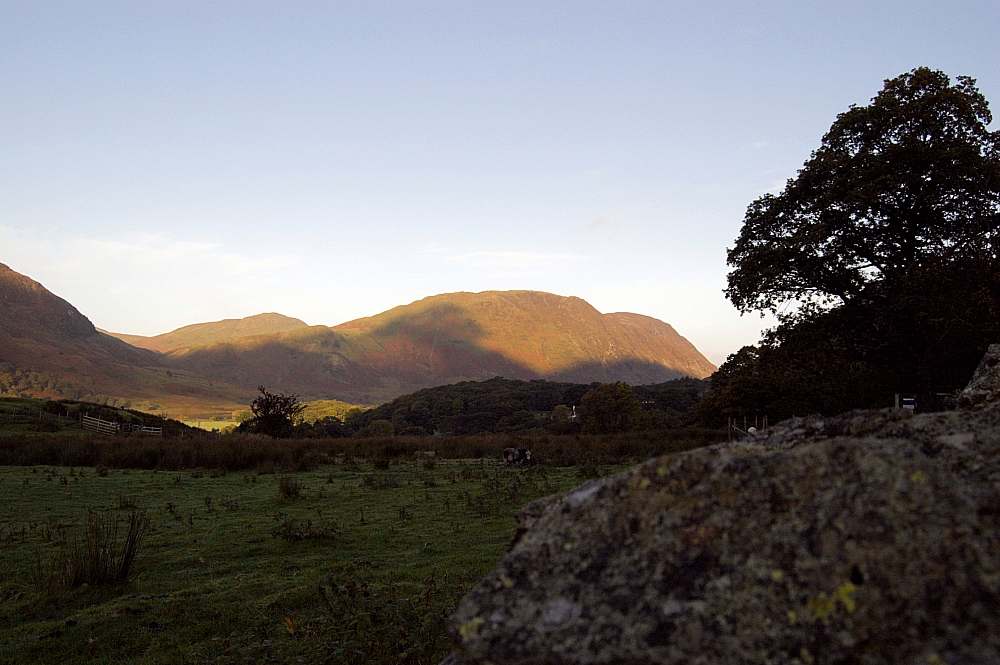
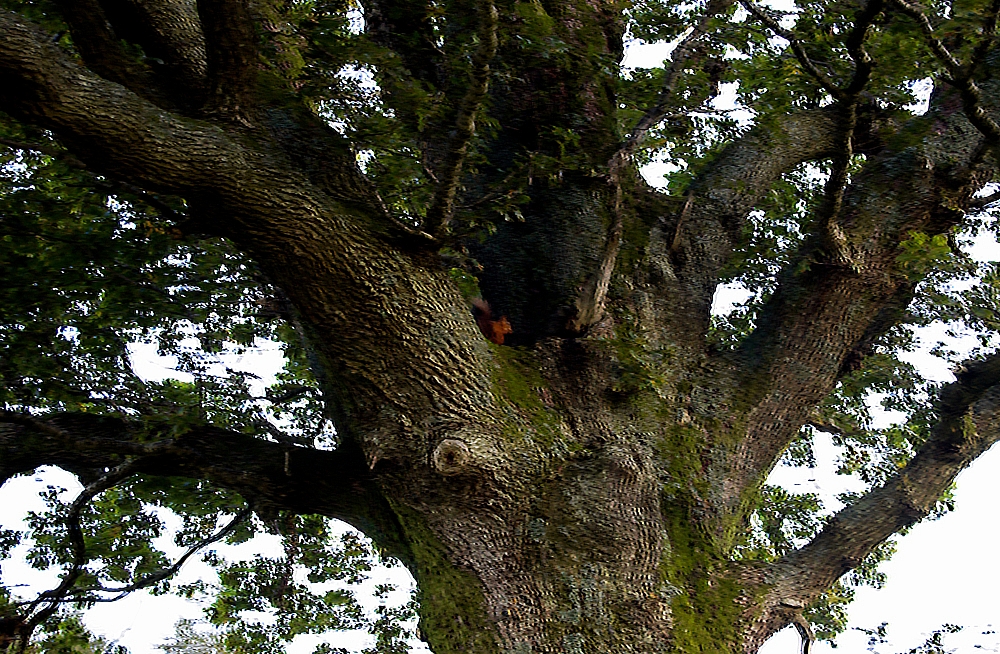
After another satisfying breakfast we packed our gear, cleared the dorm and said our farewells to the hostel staff. We would have only a half-day to walk the fells, so I opted to take our party up onto one of my favourite places, High Snockrigg, to see the impressive views into the Buttermere Valley. We parked up at Newlands Hause, where there is a fine view down Keskadale and the Newlands Valley towards Keswick:
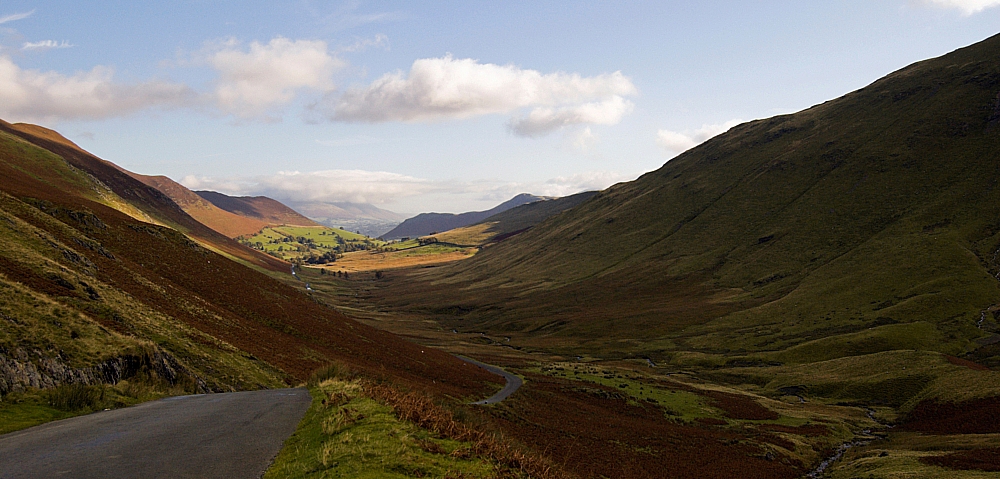
The Hause was strangely quiet except for the sound of Moss Force:
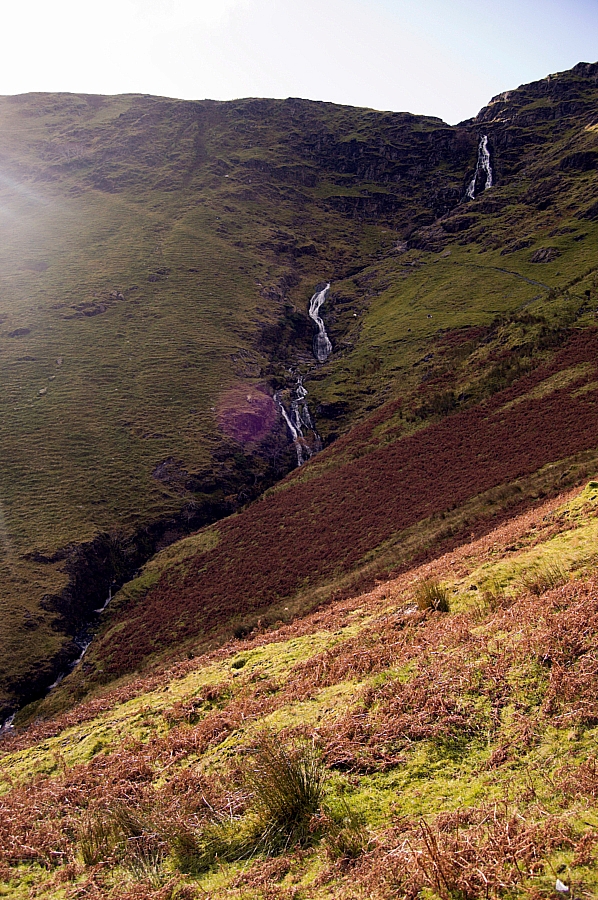
The view to the north of the Hause included Knott Rigg and Ard Crags:
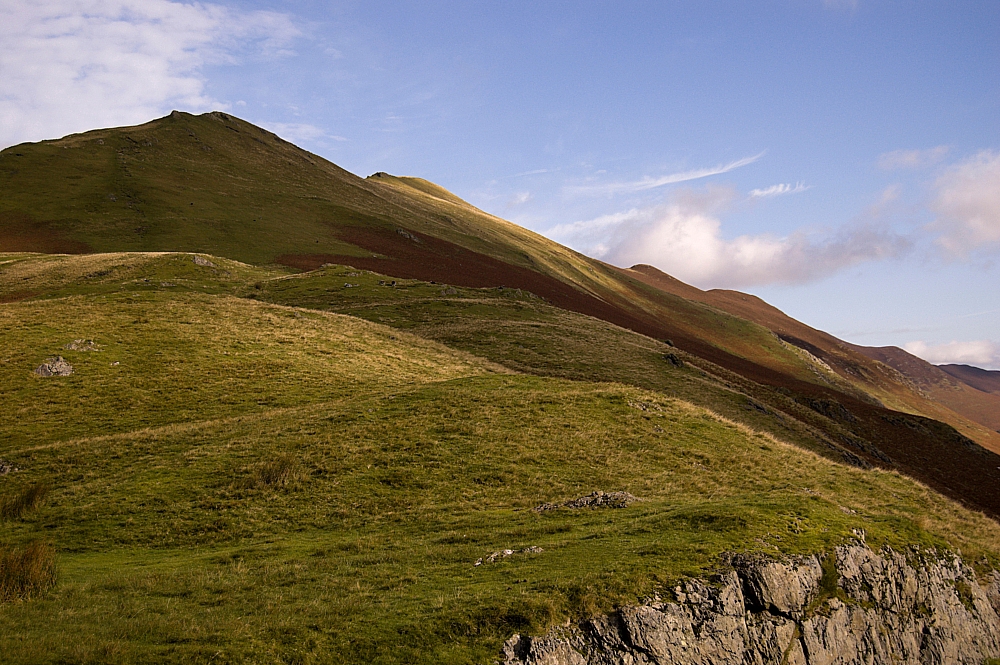
The track up the fellside is steep but eventually reaches the relative flatness of Buttermere Moss, where the view starts to open out a bit more:
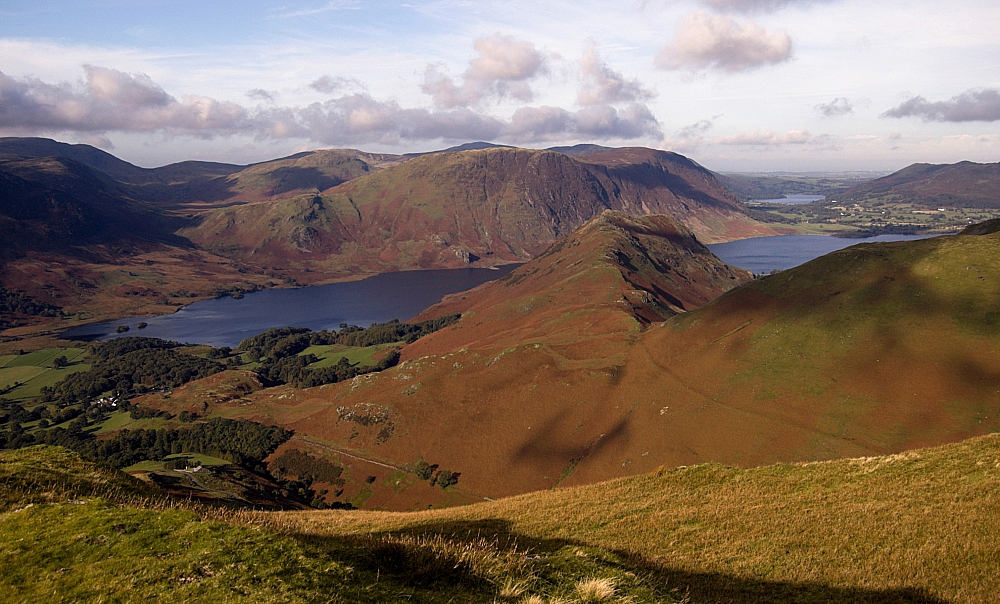
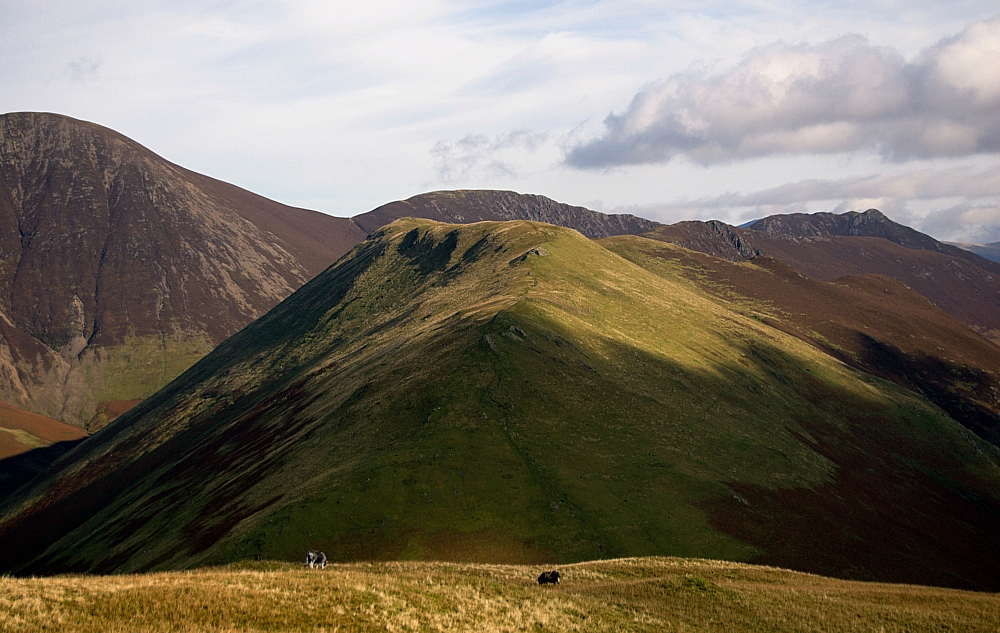
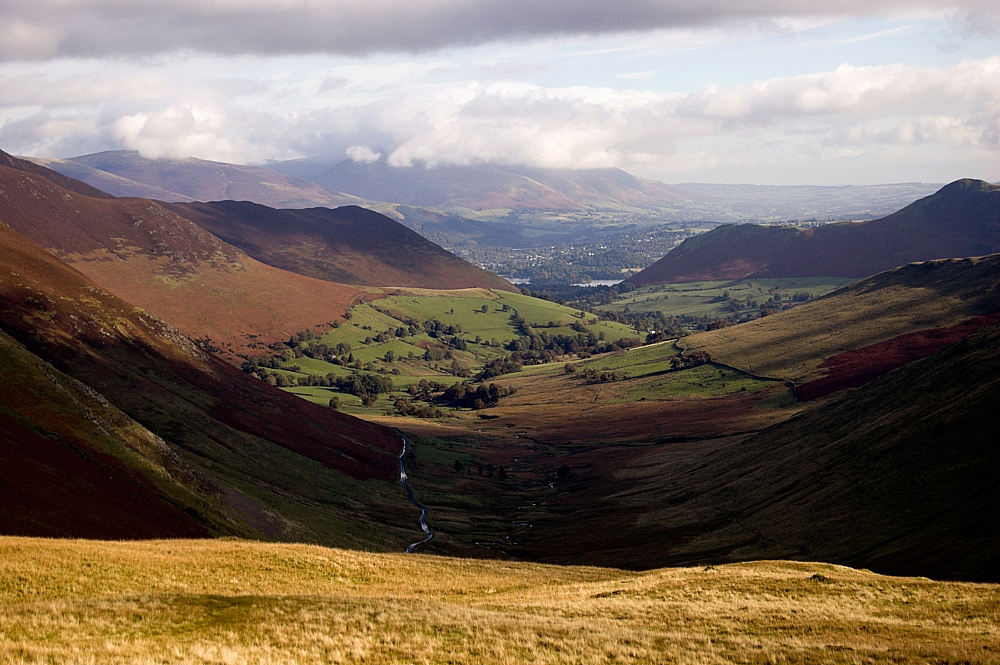
A short while later we reached the top, and we sat there for a while surveying the scenery before us. I rattled off a few shots with the 18-55mm kit lens:
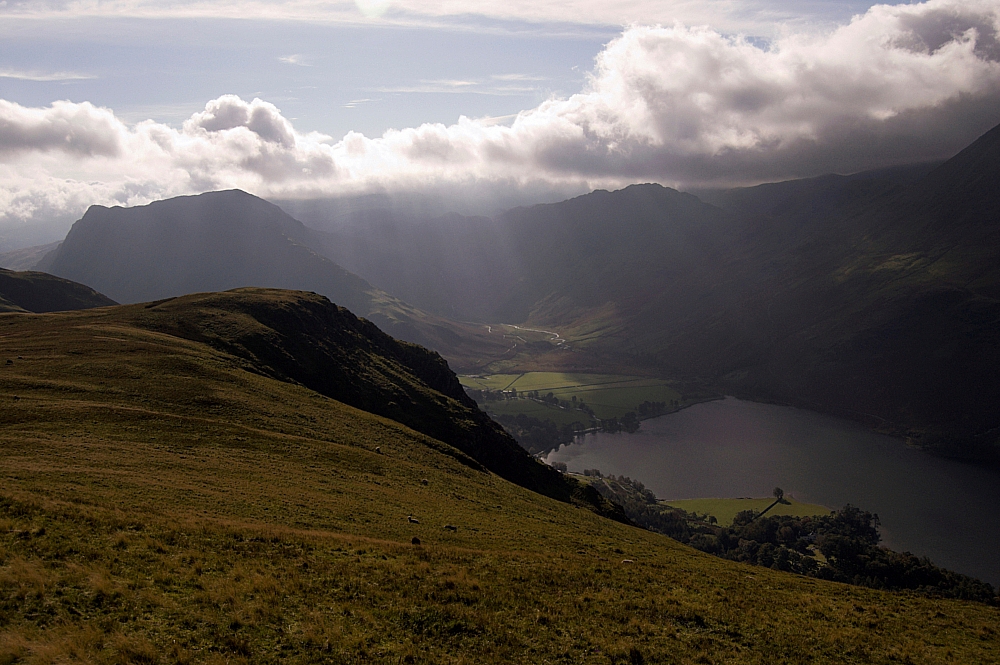
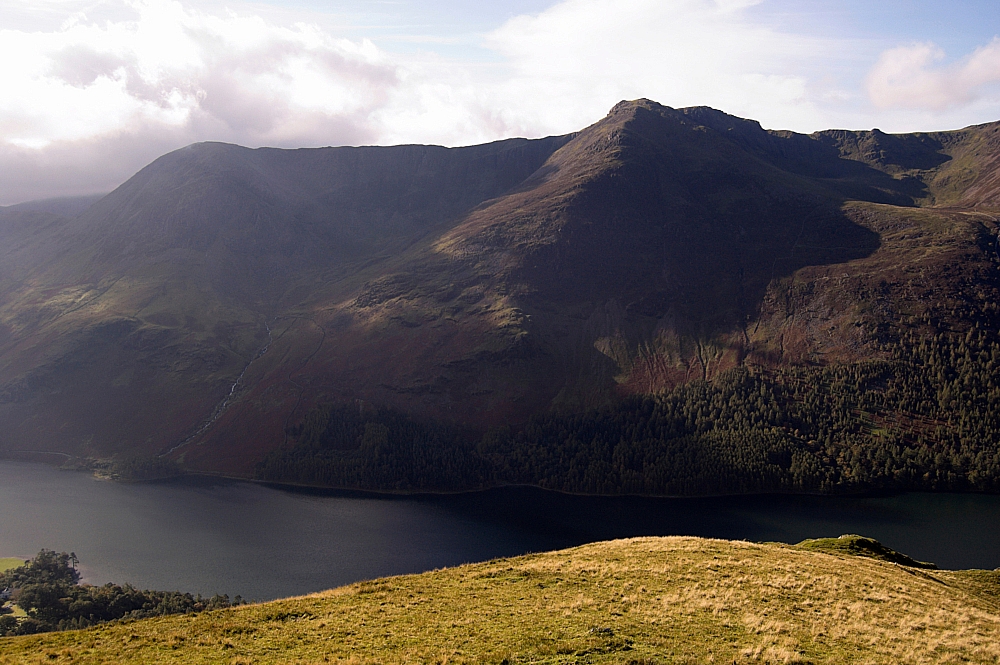
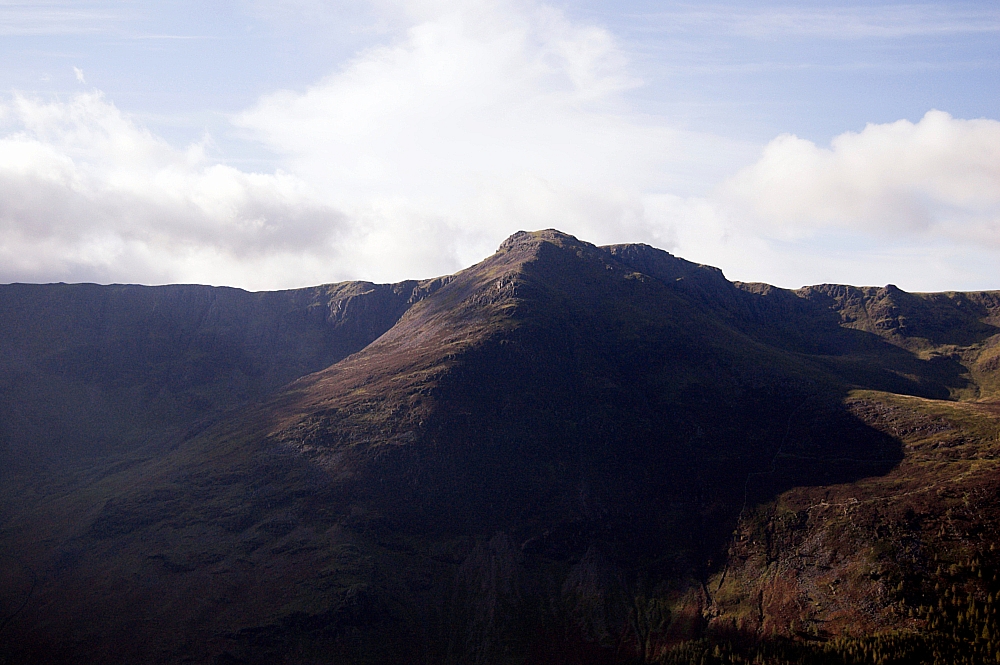
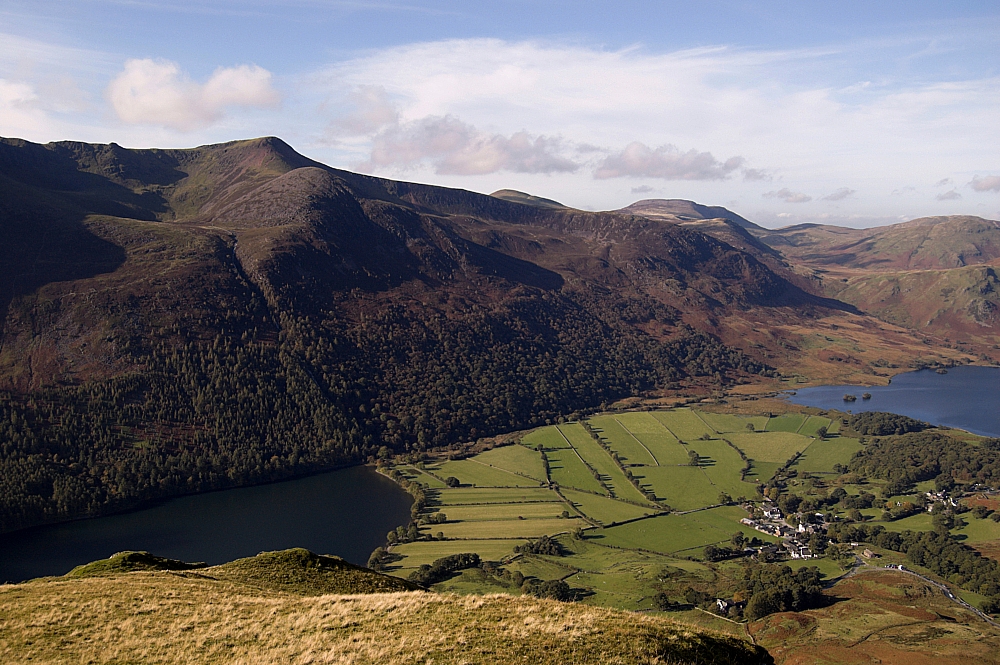
before changing to the 70-300mm for a few more:
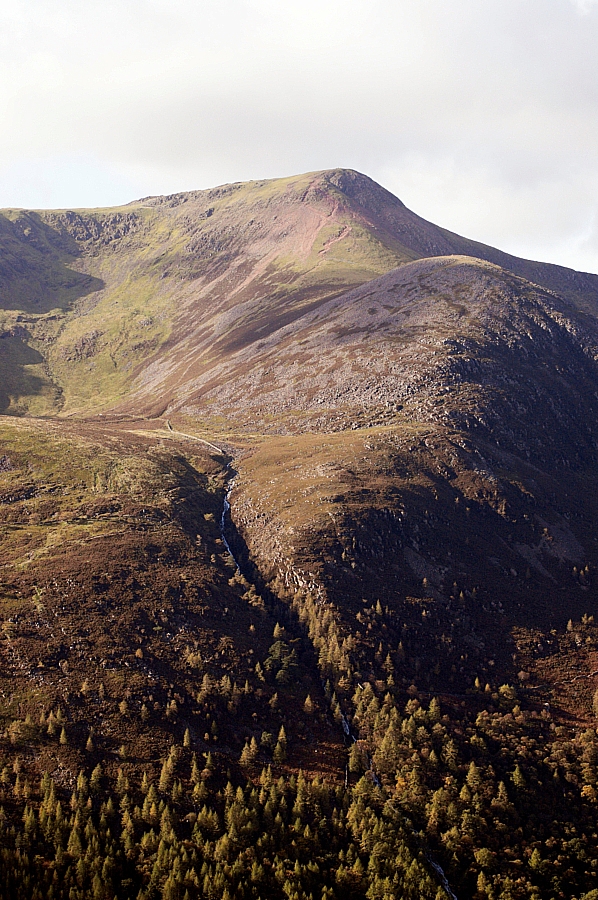
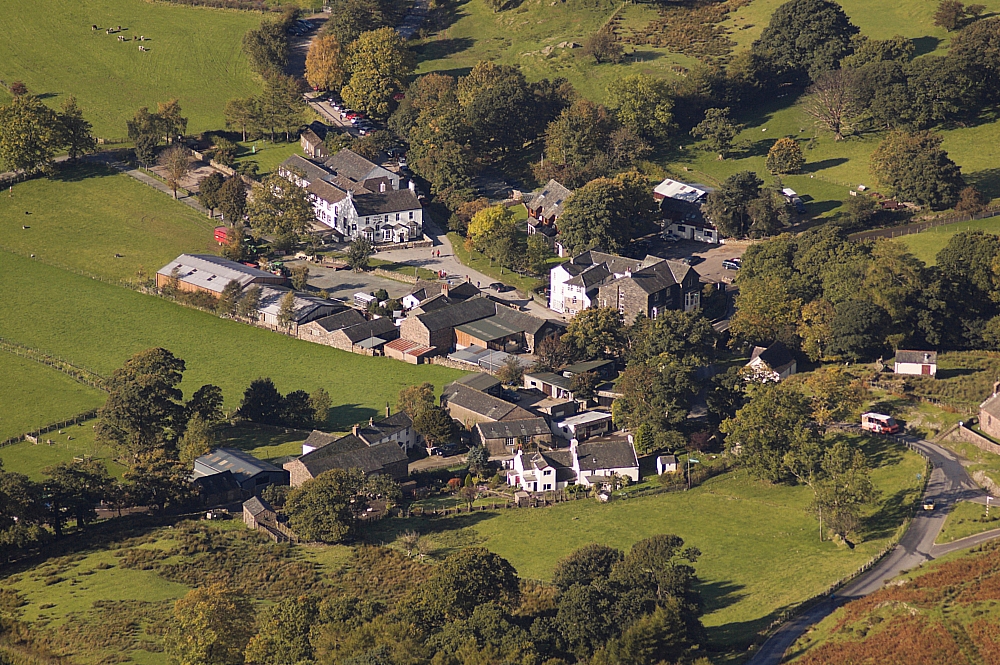
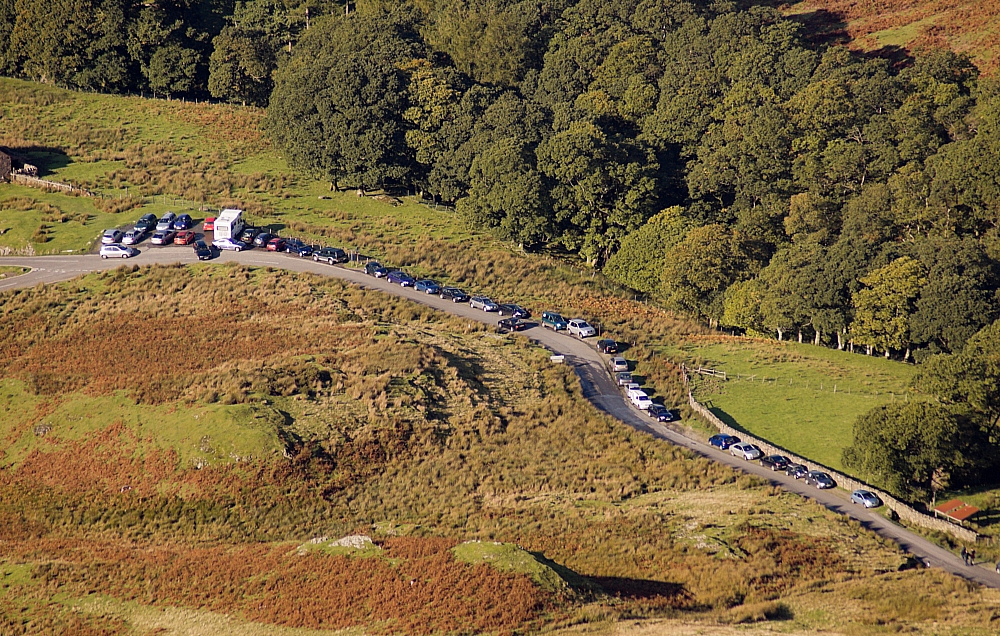
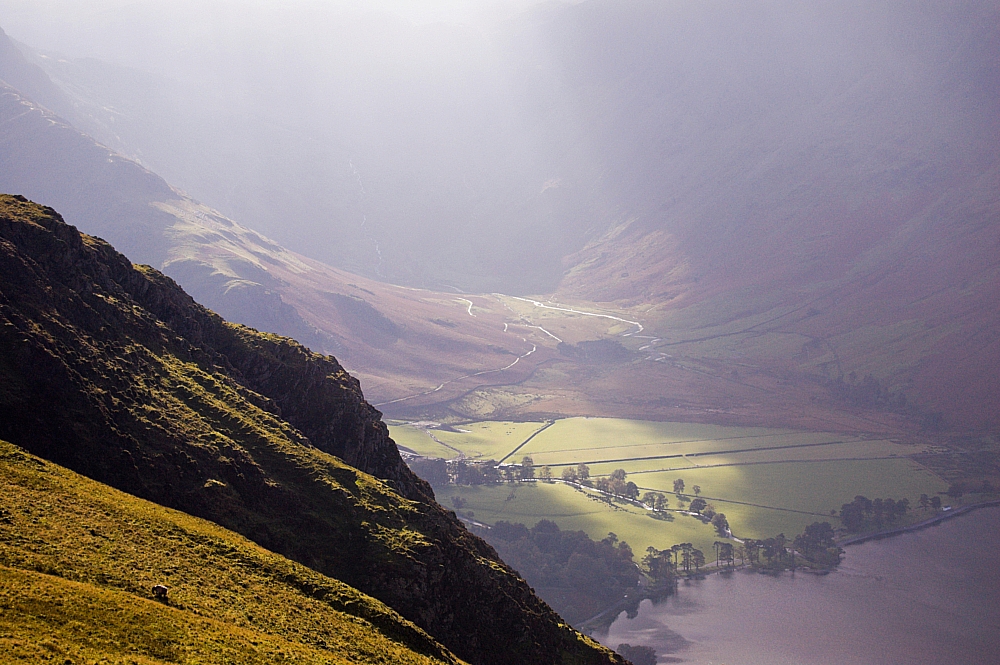
Chris and Anna stayed at the summit for a while longer:
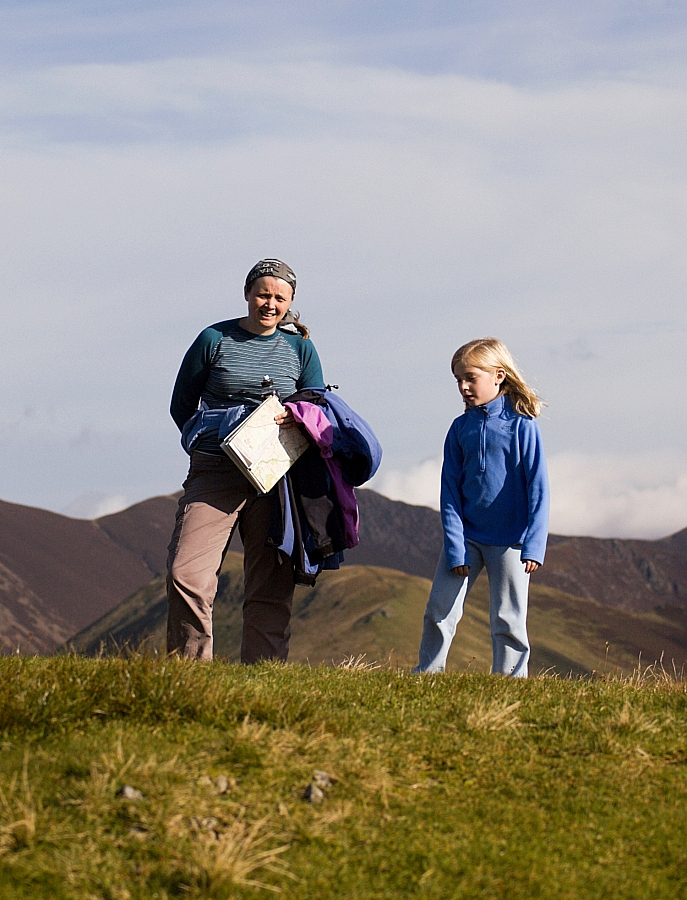
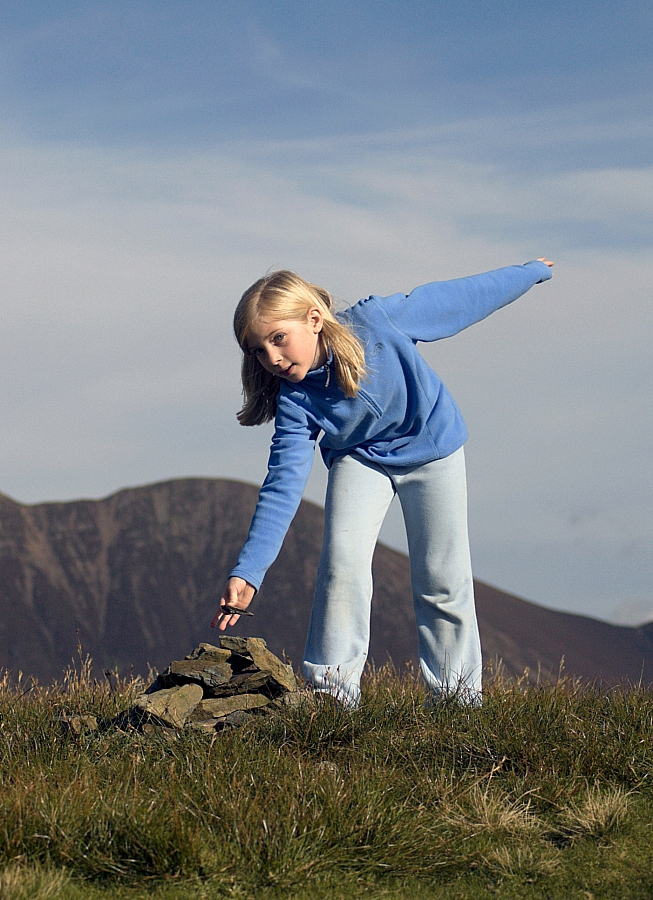
while the others went off to worry some sheep:
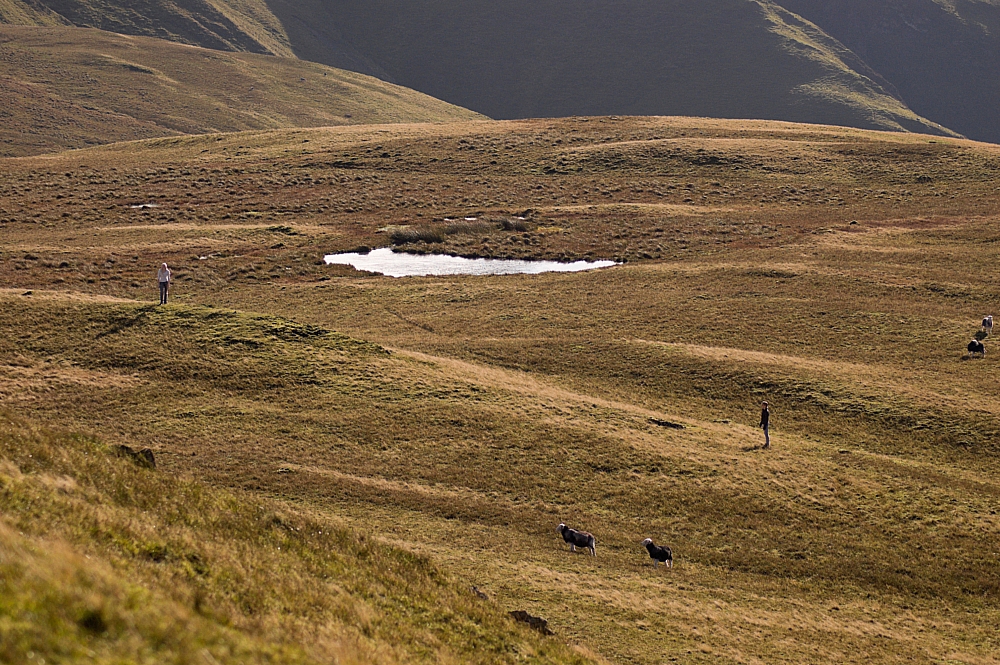
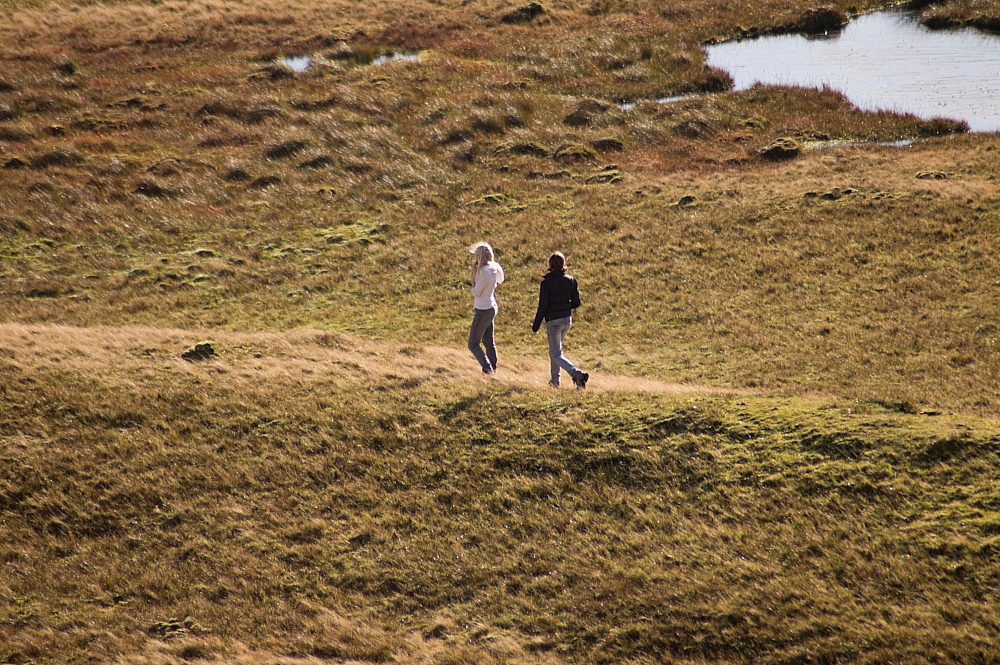
Soon it was time to head back down the long and winding road to the car:
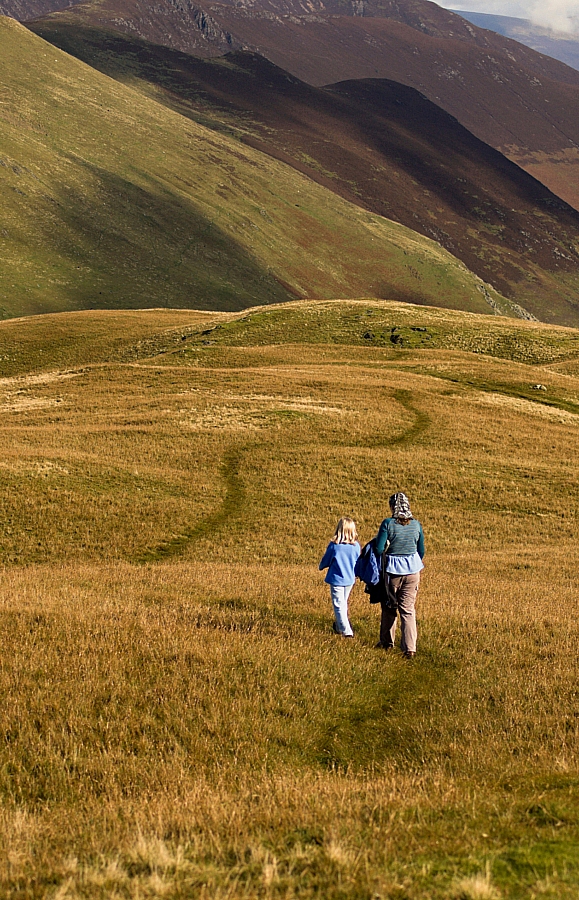
On the way back down, Anna said that she could see a big man on the hillside over the valley. It took us some time to figure out what she meant:

Back at the car we packed away the gear and made ready for our reluctant return home. Just after setting off, I managed to delay proceedings for a few minutes more while nabbing the last shot of the weekend:
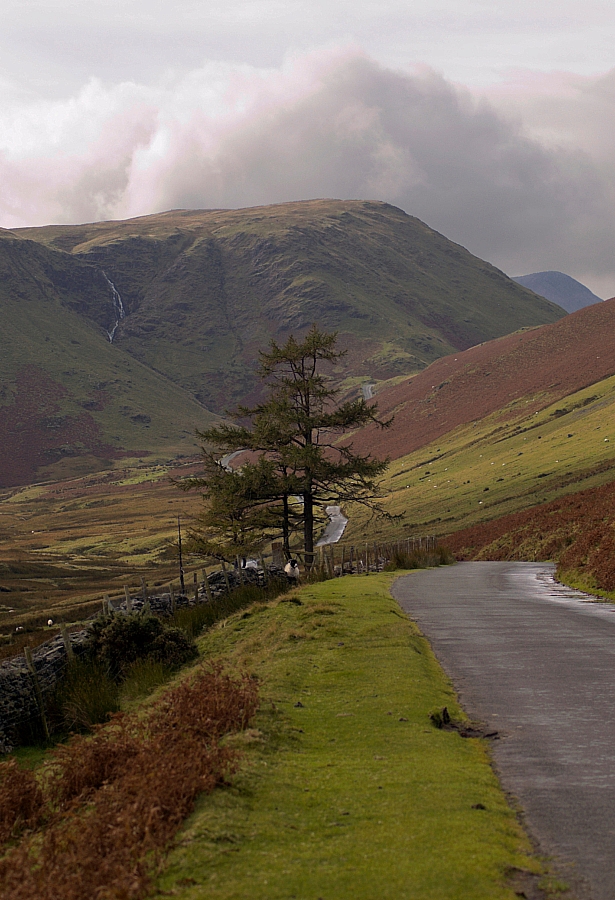
The drive back was interrupted by a couple of shopping sessions at Windermere and a bucket of KFC at one of the M6 service-stations, but was otherwise uneventful.
So, to sum up, it was another great weekend. One fellwalking novice introduced to the hills, two reintroduced after a half-year lay-off, two more Wainwrights ticked off the to-do list and a favourite place revisited for the umpteenth time - all that and good weather to boot. Brilliant stuff!

